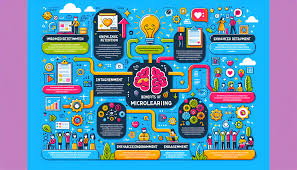Understanding the U.S. Education System: A Complete Guide for International Readers
Introduction
The United States has one of the most diverse and flexible education systems in the world. Known for its world-class universities, innovation, and student-centered learning, the U.S. education system attracts millions of students from across the globe. But for many international readers, understanding how this system works can be confusing.
This guide explains the structure, stages, and key features of the U.S. education system from kindergarten to university.
1. Structure of the U.S. Education System
The American education system is divided into three main levels:
- Elementary School (Kindergarten to Grade 5)
- Middle School / Junior High (Grades 6–8)
- High School (Grades 9–12)
After completing 12th grade, students can pursue higher education at:
- Community Colleges
- Universities and Colleges (Associate, Bachelor’s, Master’s, and Doctorate programs)
Each state in the U.S. controls its own education standards, curriculum, and public school funding.
2. Early Childhood & Elementary Education
Children typically start school around the age of 5 with Kindergarten, which is part of elementary school. From Grades 1 to 5, students focus on basic subjects such as:
- Reading & Writing
- Mathematics
- Science
- Social Studies
- Physical Education
- Arts
Emphasis is placed on interactive learning, group work, and creativity.
3. Middle School (Grades 6–8)
Middle school helps students transition from basic learning to more subject-focused studies. Core subjects include:
- English Language Arts
- Algebra and Geometry
- Earth and Life Sciences
- American History
- Introduction to Foreign Languages
Students also explore electives like music, technology, and health education.
4. High School (Grades 9–12)
High school prepares students for college or careers. Students earn credits by completing required and elective courses in:
- Math (Algebra, Geometry, Calculus)
- English Literature and Composition
- Biology, Chemistry, and Physics
- U.S. and World History
- Foreign Language (Spanish, French, etc.)
- Physical Education and Arts
To graduate, students must pass a set number of courses and may take standardized tests like the SAT or ACT for college admission.
5. Higher Education (Post-Secondary)
Students can choose between:
- Community Colleges: 2-year associate degrees; often used as a bridge to universities.
- Four-Year Colleges/Universities: Offer bachelor’s degrees (B.A., B.S.)
- Graduate Programs: Master’s (M.A., M.S., MBA) and Doctorate (PhD, MD, JD)
Many universities in the U.S. are highly ranked globally, such as Harvard, MIT, and Stanford. International students must meet admission criteria including academic records, English proficiency (TOEFL/IELTS), and financial documentation.
6. Flexibility and Electives
One of the key strengths of the U.S. system is flexibility. Students can choose elective subjects based on their interests and career goals. Unlike many rigid systems, American education encourages personal exploration, critical thinking, and soft skill development.
7. Grading System
The grading system is typically based on letters:
- A = Excellent
- B = Good
- C = Average
- D = Poor
- F = Fail
GPA (Grade Point Average) is calculated on a 4.0 scale and is used in college applications, scholarships, and job resumes.
8. Focus on Extracurricular Activities
U.S. schools and colleges strongly emphasize activities beyond academics, such as:
- Sports (basketball, football, baseball)
- Music and Arts
- Debate and Drama Clubs
- Volunteering and Internships
These activities help students build well-rounded profiles.
9. Challenges and Strengths
Strengths:
- Innovation and research opportunities
- Diversity and inclusion
- Student-centered learning
- Pathways for career and academic growth
Challenges:
- Expensive tuition for higher education
- Unequal public school funding
- Student debt burden for college graduates
Conclusion
The U.S. education system offers a broad, flexible, and opportunity-rich pathway for learners at every stage. Whether you’re a parent, student, or researcher, understanding how this system works can help you make better educational choices. Despite its challenges, it remains a leading model for academic excellence and career preparation.
A


